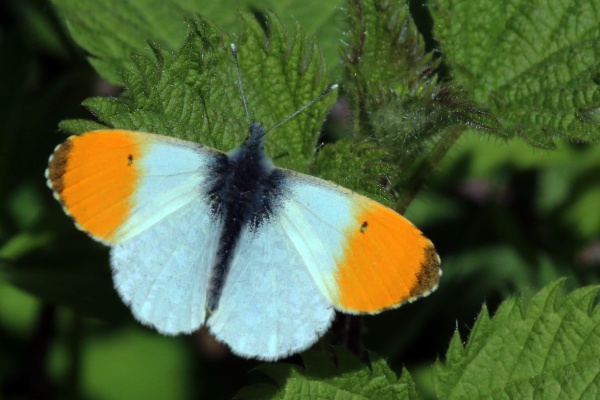Facts About Anthocharis cardamines
The Orange Tip butterfly, scientifically known as Anthocharis cardamines, belongs to the Pieridae family, which encompasses approximately 1,100 butterfly species. These vibrant butterflies are commonly found throughout Europe and the temperate regions of Asia. The male Orange Tip butterfly is easily identified by the striking orange tips on its wings, from which it derives its name.
Male and female Orange Tip butterflies tend to inhabit different environments. Males are often seen around forest edges, while females prefer open meadows. Both feed on a variety of plants, but females are particularly selective when laying their eggs, often choosing young flowers of cruciferous plants.
In terms of mating, females take the lead. Males are very active, pursuing virgin females mid-flight. Females use their abdomens to signal different messages to the males, which includes releasing anti-aphrodisiac pheromones to repel unwanted advances.
Temperature changes have influenced the seasonal appearances of these butterflies. In spring, the brightly colored males are a common sight, fluttering along hedgerows and meadows. When they settle on flowers, their wing undersides help them blend seamlessly into their surroundings.
Orange Tip butterflies have specific habitat preferences. Males are frequently found at the edges of forests and in clearings, while females remain in open meadows. They feed on a variety of plants, but females are particular about the flowers they visit for nectar.
Female Orange Tips exhibit unique behaviors related to egg-laying, guarding their eggs, and choosing host plants. Their life cycle includes laying eggs on cruciferous plants, larval development feeding on these plants, and pupation on low vegetation.
These butterflies are distributed throughout Europe and temperate Asia, with different subspecies found in various regions. Environmental factors such as temperature changes can influence their migration patterns and timing of appearances.
Predators like spiders and grazing animals, such as Muntjac deer, pose significant threats to Orange Tip butterflies. Their mating rituals involve intricate courting behaviors and the use of pheromones to communicate readiness to mate.

 Bhutan
Bhutan